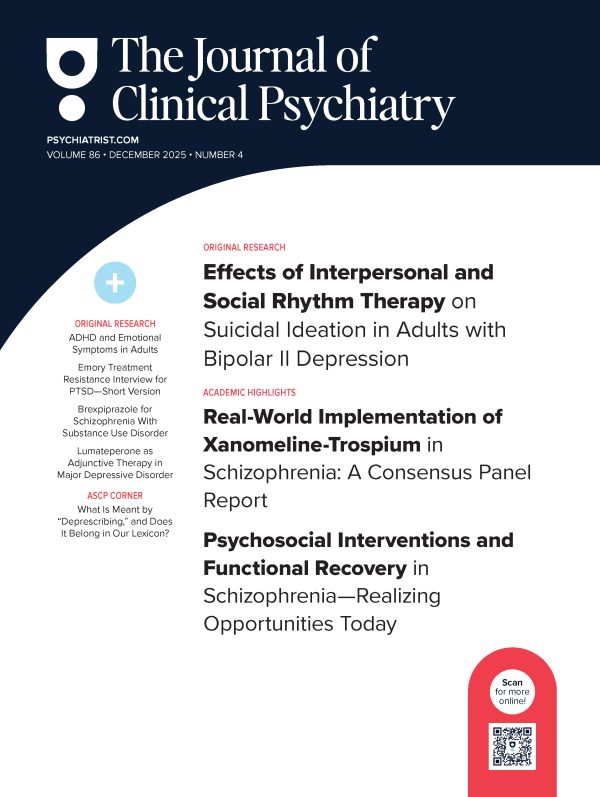Correctly diagnosing schizoaffective disorder depends on eliciting and documenting an accurate history of the patient’s signs and symptoms, including the duration, intensity, and time course. To assist in making the differential diagnosis of schizoaffective disorder, clinicians should carefully gather information from patients and other informants, consider the information within a conceptual diagnostic framework, differentiate between schizoaffective disorder and other disorders, and re-evaluate the diagnosis over time.
Find more articles on this and other psychiatry and CNS topics:
The Journal of Clinical Psychiatry
The Primary Care Companion for CNS Disorders


